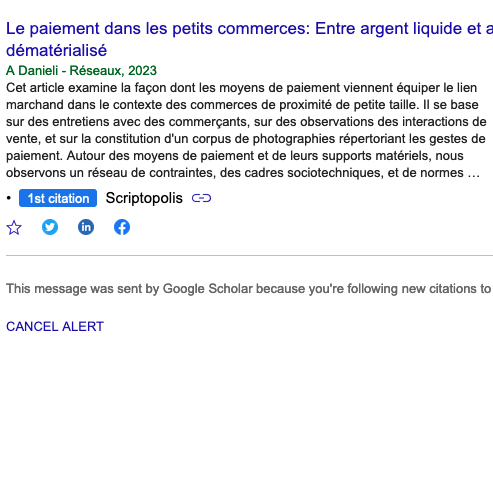Citation
Internet, May 2023
We know this well, at least since Umberto Eco: any published text depends solely on its readers, and authors can do little in the face of unforeseen circulation, unlikely support, unsolicited commentators, irascible critics and overall indifference. In the case of Scriptopolis, which is also intended for a wide range of non-academic audiences, we have of course been contacted by some media, most recently by the Swiss Nation Radio.The precise and pertinent questions allowed us to talk about the book, the writings, our approach, the website and its posts. And, to our great surprise, when the book came out four years ago, a glowing review in the morning show of the French National Radio had contributed to the discovery of the ‘baroque’ universe co-constructed with our dear editor Élodie Boyer.
But Scriptopolis is also an academic book, based on many influences and featuring a central theoretical section, as well as a bibliography. But in the academic world, casual readers and media interviews count for little. It is one thing to claim to have read a book on your CV, but quite another to ensure that it has been included in the academic corpus. Aside from invitations to seminars and workshops, the first piece of writing that counts is a review published in a journal or on a platform, a tangible sign that a reader thinks the work is important enough to write an article which is entirely dedicated to it, then validated by a college of peers.
This first, centuries-old form of valorisation is now tending to be overshadowed by a new intertextual relationship: the inclusion of the work in the bibliographic list of another academic piece of writing, which bibliographic databases then transform into citations, accumulating like so much evidence of the relevance of the original text. And these databases offer their authors tools for tracking these traces of scientific credit, as in the image captured above. What has dematerialised money in small shops got to do with Scriptopolis? You’d have to read the text – and therefore have an appropriate subscription – to find out.
However, we can be indifferent to the meaning of this link: from now on, the quotation is detachable from the reading, it circulates freely and tells us “this text counts” not because it has readers, but because other authors have included it as a reference. So it’s easy to understand the importance of the ‘first quote’, in blue superimposed on the text, newly highlighted by Google’s specialised search engine. An academic christening has taken place, and it’s time to celebrate.







